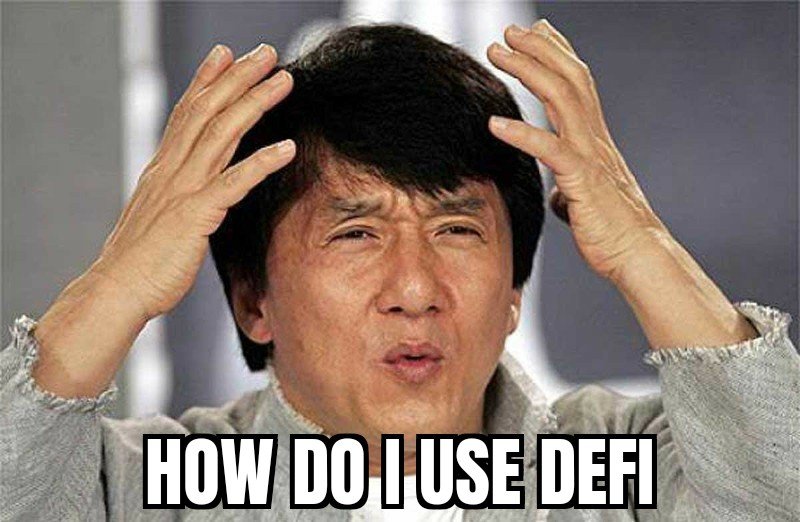
Everyone is excited about the promises of crypto tech and decentralized finance, but the truth is DeFi needs to evolve. Yes, it’s amazing and innovative and sticking it to the man in traditional finance. But there are definitely big hurdles DeFi protocols need to overcome before the ecosystem can move forward and increase adoption and TVL.
Before we can bank the unbanked and destroy the banking cartel, here are 3 key ways DeFi needs to evolve.
Usability

There are some extremely cool things in DeFi that can get you some eye-popping yields. But one of the biggest problems is usability and user experience. This has been a problem for crypto in general since the very beginning. Back in the early days, it was difficult to figure out how to get Bitcoin. It was even more complicated to figure out how to mine it. These days, with centralized exchanges, on-off ramps, and lots of apps, crypto is fairly accessible. But DeFi is not there yet.
If you’ve poked around at all in Web3 or tried to use DEXs or other DeFi protocols, you know it can be confusing and difficult to the point of frustration. From a lack of clear documentation to having to make multiple transactions that rack up fees, DeFi is still way too hard for the novice crypto investor.
Regulatory clarity

Part of the reason crypto was created was to escape the death-grip of governments and central banks. The bigger and harder-to-ignore crypto gets, however, the more regulatory bodies will come for it. Many people think that’s not all bad because at least some regulatory clarity can define the rules of the game in what is currently a chaotic space.
There are rampant scams, rugpulls, hacks, and other dangers in DeFi that come as a cost of its currently unregulated state. While unregulated industries create a lot of incredible opportunities, they are also very dangerous. Everyone has their own opinion on what level of regulation is necessary, but it seems the inevitable trajectory is that some regulation will be enforced.
Increased liquidity

Another real problem in DeFi is a lack of liquidity. Every market needs liquidity to enable asset trades. In traditional markets, the intermediaries provide liquidity and create trades between buyers and sellers. In DeFi, liquidity pools are how you can trade one crypto for another. Because DeFi is a new sector, there is not as much money tied up in liquidity pools, although that amount is growing.
DeFi needs to evolve to increase liquidity dramatically if it wants to sustain increasing trading volume and reduce the risks of slippage and impermanent loss. No one wants to use DeFi protocols if they can’t get their assets out when they want them.
DeFi needs to evolve, but will it?
Admittedly, these problems are difficult to solve. But so was the problem of the digital currency, and Bitcoin solved it. The rate at which crypto tech is iterating and improving and building new DeFi protocols is staggering, but that doesn’t mean we should slow down now. DeFi needs to evolve and establish a firm foundation if it wants to remain a player in the financial economy.
About the Author

Michael Hearne
About Decentral Publishing
Decentral Publishing is dedicated to producing content through our blog, eBooks, and docu-series to help our readers deepen their knowledge of cryptocurrency and related topics. Do you have a fresh perspective or any other topics worth discussing? Keep the conversation going with us online at: Facebook, Twitter, Instagram, and LinkedIn.


